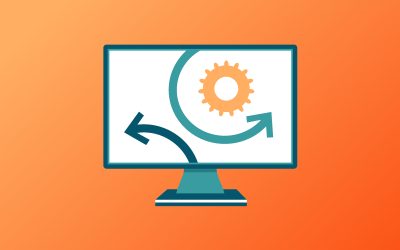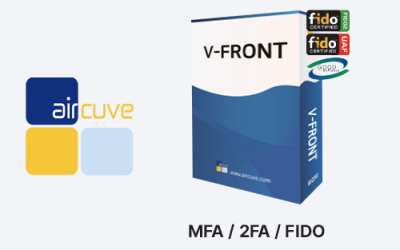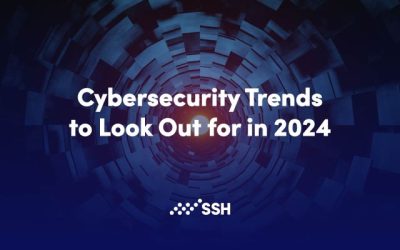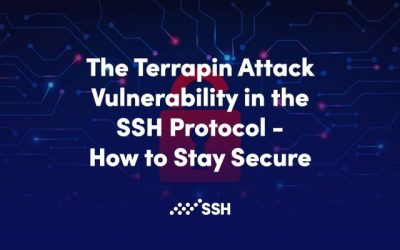Third-party applications have become essential tools for companies worldwide, enhancing productivity and fostering innovation. However, integrating these applications into your ecosystem can complicate patch management, potentially exposing your organization to security risks and vulnerabilities.
Beyond Factory Reset: Elevate Your Data Security with Securaze Solutions
In today’s rapidly evolving technological landscape, the lifespan of our electronic devices is becoming increasingly shorter. Upgrades are the norm, leading to a surplus of discarded devices. However, simply performing a factory reset before selling or repurposing your device might not be enough to ensure your sensitive data is fully protected. The recent cautionary tale from Canon serves as a stark reminder of the potential risks.
‘Tis the season (SMeaSon?) for Smishing
Smishing attacks can take many forms. In this blog, learn how to avoid being tricked.
Sending logs to Splunk using syslog-ng
There are many ways you can collect log messages using syslog-ng and forward them to Splunk. In this blog I collect the history of Splunk support in syslog-ng, and the advantages and disadvantages of various solutions, both open source and commercial.
Aircuve V-Front MFA – safeguard organization access points with multi-protocols and biometric
Aircuve V-Front MFA stands at the forefront of multi-factor authentication solutions, delivering robust security measures to safeguard organizational access points…
Cybersecurity Trends to Look Out for in 2024
The importance of cybersecurity has been on the rise for a while now. In 2024, cybersecurity will make its way into boardrooms, enter the AI battlefield, or change how businesses juggle their trade secrets and sensitive communications.
API protection: How to create a fortress around your data
If data is the new oil, APIs are the pipelines through which it flows. If they aren’t secure, the resulting spill can be devastating to a business. In fact, it’s estimated that API insecurity results in a loss of $41 billion-$75 billion annually.
WHY NETWORK LOAD BALANCER MONITORING IS CRITICAL
Your networks are the highways that enable data transfers and cloud-based collaboration. Like highways connect people to physical locations, networks connect people to applications and databases. As you would look up the fastest route between two physical locations, your workforce members need the fastest connectivity between two digital locations. Network load balancers enable you to prevent and identify digital “traffic jams” by redistributing incoming network requests across your servers.
Common barriers to automated patch management and tips to overcome them
As reported software vulnerabilities are reaching record levels, IT teams are grappling with the ongoing grind of keeping endpoints patched and up-to-date. Recent reports detail that while some attacks rely on newly discovered exploits, 50 percent of attacks target vulnerabilities reported before 2017. The never-ending cycle of discovered exploits and the ongoing time, resources and employee hours used to deploy patches to devices places a considerable burden on staff aiming to enhance organizational security. Automated patch management would free up team members to focus on more critical vulnerabilities, but organizations may find that getting to that point may be a bit more challenging than expected.
Building the Human Risk Dream Team
I was inspired by a thread started by Cathy Click, head of Security Awareness at FedEx. She asked a fantastic and inspiring question, what would the perfect Security Awareness / Culture team look like? If I truly wanted to manage my organization’s human risk, who would I need to manage that effort? I felt this was a fantastic question and wanted to share my perspective. I fully realize not all organizations have the resources to support such a diverse team I describe below, but this is something I would love to see organizations strive for.
How to unify all your API assets so they’re easier to consume
Think about your API assets like you would books in a library. Can someone come in and easily find the genre they want? When they find a book they’re interested in, can they flip through it for more information? When they’re ready, is it a straightforward process for them to check out?
The Terrapin Attack Vulnerability in the SSH Protocol – How to Stay Secure
The Secure Shell (SSH) is a widely-used protocol that provides (remote) secure access to servers, services, and applications – and between them for automated file transfers. These connections are measured in the millions per week.
About Us
From hardware appliances to software solutions and training, DT Asia understands cybersecurity challenges and can deliver solutions that help detect & identify, protect & secure, authenticate & authorise, and degauss & destroy.
Contact Us
Address
#02-72 WCEGA Tower,
Singapore 658065












